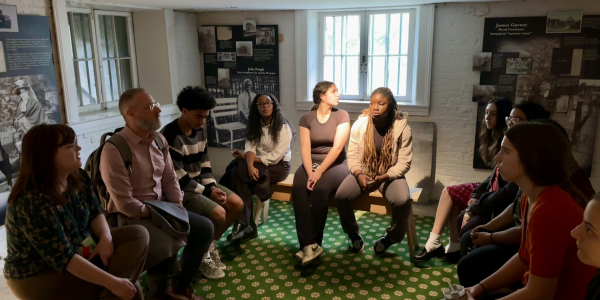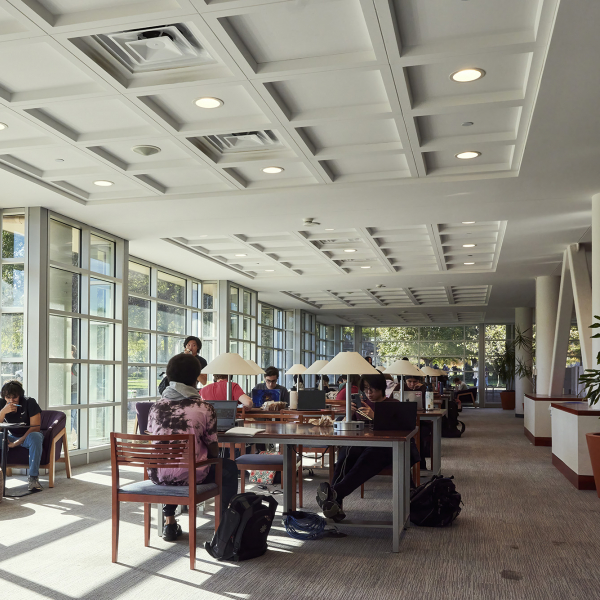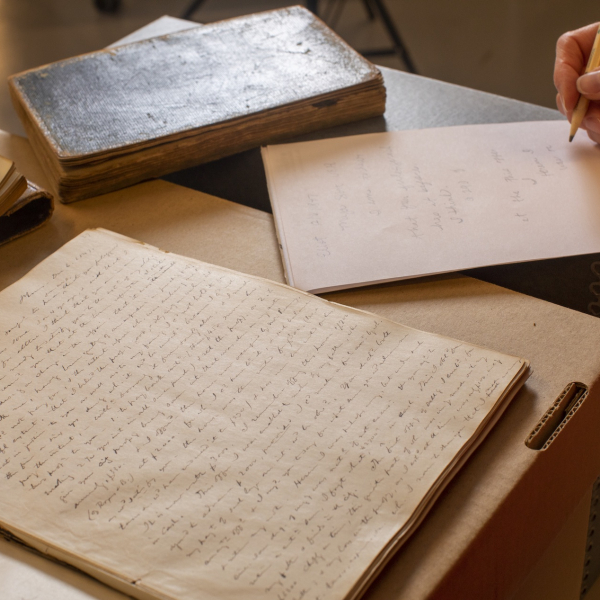The WashU & Slavery Project and members of the Washington University community are supporting local efforts to recognize, preserve, and interpret local sites of Black heritage through their nomination to the National Park Service's National Underground Railroad Network to Freedom, Reconstruction Era National Historic Network, and African American Civil Rights Network programs. The Park Service Networks help build recognition, education, and tourism around these significant sites, facilities, and programs, and and offer grants and other resources to support programming, interpretation, and preservation.
When representatives of each NPS program visited St. Louis for a day-long Gateway to Inclusive History Conference to share about each of the Networks and how to nominate a site or program on June 19, 2023, WashU & Slavery Project Associate Director Kelly Schmidt and Great Rivers Greenway Community Program Manager Elizabeth Simons shared that only five sites in Greater St. Louis have been successfully nominated to the Networks. During the information session, Schmidt and Simons invited participants to brainstorm other eligible sites: the group identified 88 sites that were eligible for at least one of the three Networks. The conference has built momentum around nominating more local sites to the Networks and a more concerted effort for local stakeholders to coalesce around preserving and interpreting Black heritage through a St. Louis Black Heritage Network.
As a result, three St. Louis area sites -- Archer Alexander's burial site at St. Peter's Cemetery, The Tower Grove House at the Missouri Botanical Garden, and Greenwood Cemetery have been recently added to the NPS Network to Freedom Program, as shared by St. Louis Public Radio.
Archer Alexander, famous for his pursuit of freedom during the Civil War where he sought protection from Union troops by reporting on Confederate sympathizer's plans to destroy a atrategically-significant bridge in St. Charles, found refuge in the home of Washington University founder William Greenleaf Eliot, who wrote an account of Alexander's story after his death. WashU & Slavery Project Director Geoff Ward, together with Schmidt and WashU student Alura Berry ('23), supported researcher Dorris Keeven-Franke with the nomination of Alexander's burial site to the Network to Freedom.
The university likewise shares historical ties to Henry Shaw, founder of the Missouri Botanical Gardens and Washington University's School of Botany. Shaw's Tower Grove House and properties, still standing and open for tours at the Missouri Botanical Garden, is the site from which several people Shaw enslaved sought to escape to freedom, including Jim Kennerly, Sarah, and Esther and her children. Kennerly and Esther's family's escape is commemorated each year in the Mary Meachum Freedom Crossing Celebration. Ward and Schmidt have partnered with and advised the Garden in research and reinterpretation efforts around enslavement history, and Sylvia Sukop's (PhD student in German at WashU) research during a Mentored Professional Experience with Sean Doherty, VP Education at Missouri Botanical Garden, helped inform the Garden's Network to Freedom application with innovative ideas for educational and interpretive programs.
Gephart Institute student Keona Dodor ('24) also spent the summer helping research the stories of people who pursued freedom on the Underground Railroad and are buried at Greenwood Cemetery, the first commercial non-sectarian cemetery for African Americans in St. Louis, established in 1874. Among some of the most famous freedom-seekers buried at Greenwood are Harriet Scott and her daughter Lizzie, whose suit for freedom with Dred Scott resulted in the infamous Dred Scott Decision of 1857, and Lucy Delaney, who worked with her mother to sue for freedom in the 1840s after an unsuccessful attempt to seek freedom by escape.
Further nominations are in the works. Building upon student research on people who sought freedom from enslavement at the General Daniel Bissell House in North St. Louis County, one group of students in Schmidt's course, St. Louis Black History, Culture, and Civic Engagement, researched and drafted nominations for the General Daniel Bissell House. The nomination has been submitted to the National Park Service for review and Arielle Hatton ('26), a student from the class, is using the research to revise interpretive panels about enslavement at Bissell House designed by Sandra Meszaros ('23) in the course Slavery and Public History. Another group nominated Dred Scott's burial site and memorial in Calvary Cemetery, where a new memorial was dedicated last September. Student Max Schreiber ('26) is interning with Schmidt and with Lynne Jackson, Dred Scott's great-great-granddaugther and President/Founder of the Dred Scott Heritage Foundation, to further edit and submit the nomination. A final group drafted a nomination for the WashU & Slavery Project for its efforts to highlight the stories of freedom seekers in St. Louis, which is in the process of being revised and submitted.
These efforts significantly bring Missouri history into the national remembrance of freedom struggles against the forces of racism and oppression; moreover, potential grant support provided by the National Park Service for interpretation and preservation provides further opportunities for preserving and celebrating these stories locally, and building tourism and opportunities for learning from these locally and nationally significant sites.





